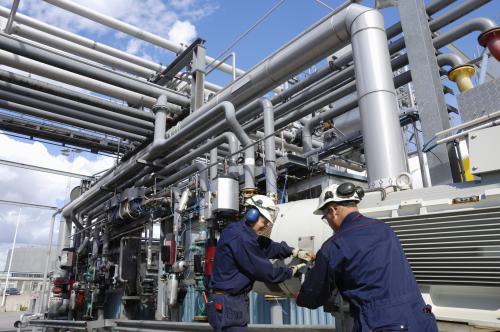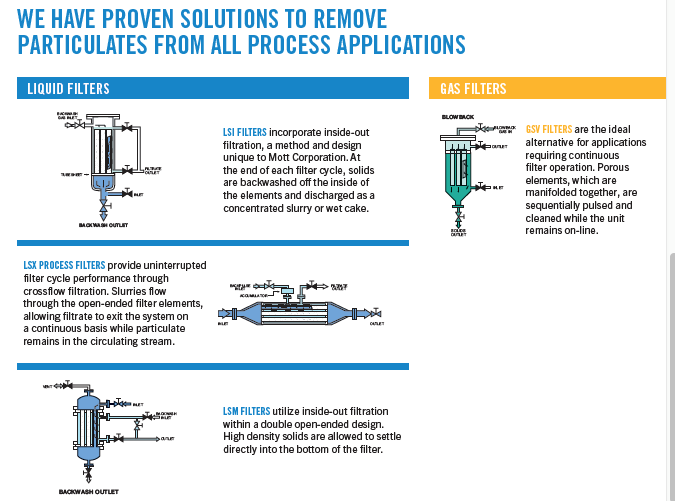How to Get the Maximum Benefit Out of Your Process Filtration: Part 6 Saving Your Downstream Equipment

Specialty chemical, agrochemical, and pharmaceutical processors understand the importance of successfully removing solid particulates from the process stream to prevent damage to sensitive and expensive downstream equipment.
If allowed to remain in the process stream, high-velocity solids can and will degrade pump impellers, resulting in reduced flow performance and eventual mechanical failure, causing expensive offline repairs and disrupting throughput.
If left unchecked, particulates can and will erode the surfaces of heat exchanger tubes which will eventually lead to tube breakage. This means two fluids not designed to be together are brought together – often with serious results. At a minimum, fluids on both sides of the heat exchanger are contaminated – a situation that negatively impacts productivity and also results in expensive repairs.
Unexpected solids present in a downstream reactor may alter the rate of reaction or, worse yet, cause a harmful chemical reaction or adversely affect product quality. This results in wasted product and lost throughput.
When equipment is taken offline for maintenance, processors sacrifice crucial production time and put maintenance workers in the position of having to perform repairs they don’t normally do. Oftentimes, this means repairs can be time consuming and potentially dangerous. As today’s chemical plants are running leaner and leaner, this means your maintenance personnel are performing unexpected and unplanned repairs instead of working on their required proactive inspections and maintenance efforts.
When it comes to protecting your downstream equipment, why settle for less than 99+% particulate capture?
Porous metal filters rely on barrier filtration as the primary method to capture particles from process stream. This means that the pores are designed to be slightly smaller than the smallest expected particle in the stream. Further, since porous metal filters do not rely on filter aids or the development of a cake for initial filtration, initial quality is very good, typically 99.9% or better. As the filter cycle continues, the formation of a filter cake results in additional quality improvement. Of course, selection of the optimal media grade and knowledge of the particle size distribution, especially the finer particles, is critical to success.
As particle loading on the filter increases, the pressure drop also increases. Pressure is monitored using sensing technology placed on both sides of the filter element bundle. When the pressure reaches the terminal value, either based on lab or pilot scale studies or on operating history, the filter is blown back with a pulse of clean gas to dislodge the filter cake. Because this entire process is fully automated and requires no human intervention, there is no potential for human error. The filtration cycle, and thus blowback interval, is application specific and can range from several minutes up to days depending on solids loading, cake properties and fluid properties.
All filtration is accomplished completely passively, with no rotating components. And, by using single-pass technology in which an entire train of process filtration steps is accomplished with a single filter system – you eliminate complexity and minimize installation and maintenance costs over the life of the unit.
For many leading processors, investment in sintered porous metal filtration technology has proven to be a competitive differentiator.
Are you experiencing downstream equipment failure? Let us test your current process stream.
Over the years, we have performed thousands of filter feasibility tests for processors in nearly all industries using our state-of-the-art testing laboratory. We can do the same for you. To take advantage of this service, simply send us a sample of your pre-filter feed and post-filter filtrate from your existing filtration technology.
With lab scale testing, we can quantify the amount of solids before and after any existing filter and quantitatively determine operational benefits of switching to a single pass porous metal technology. Check out our video on filter feasibility testing for details about the process.

If you’d like to discuss your filtration challenges and explore possible solutions, feel free to send me an email or find me on LinkedIn.
And, if you’ve missed any of my previous blogs, on the topics of 1) saving your operating dollars, 2) saving your workers, 3) saving your catalyst, 4) saving your throughput revenue, or 5) saving your company’s reputation, please click on the relevant link.
Patrick Hill, Lead Project Engineer